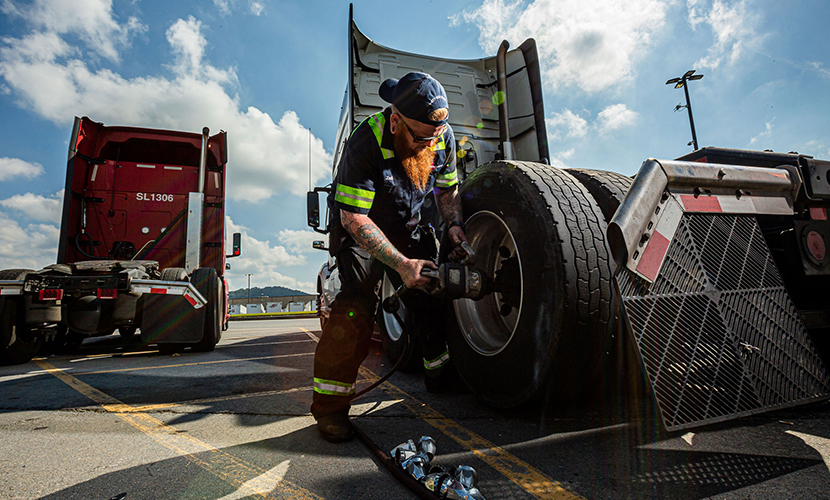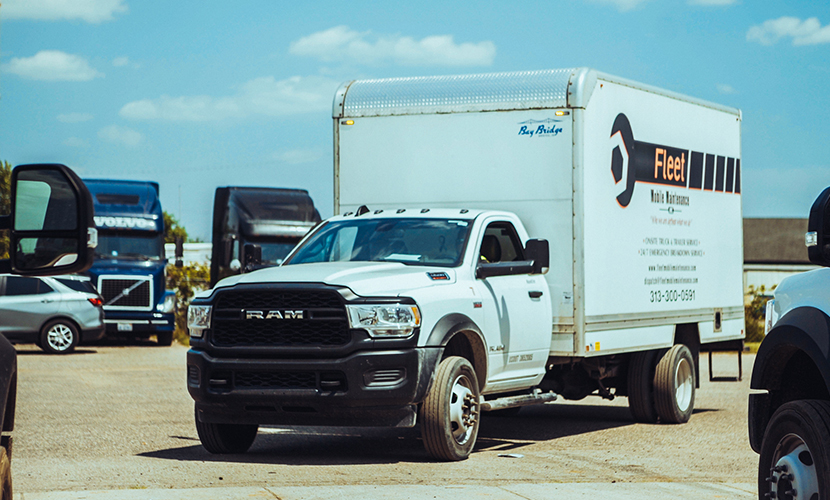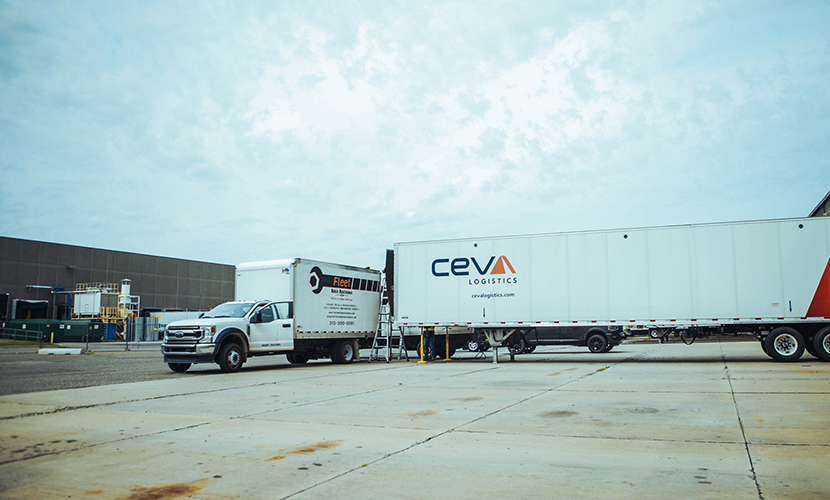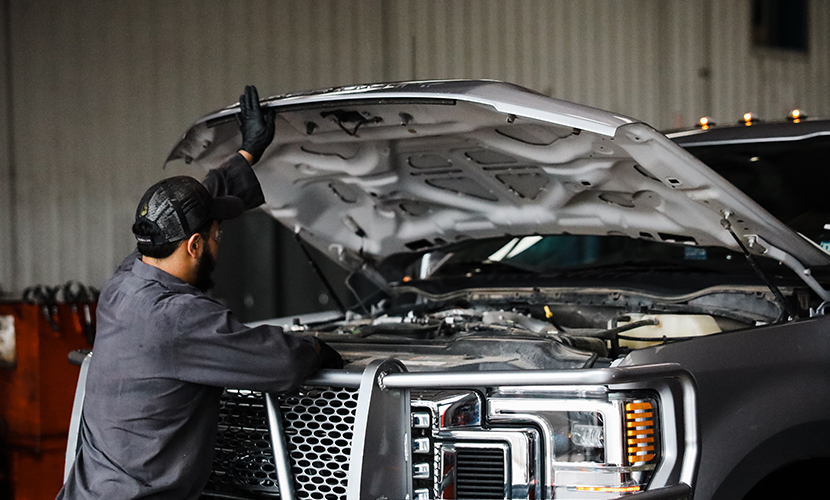5 Effective Strategies for Fleet Accident Management

An immense amount of responsibility is placed on the shoulders of millions of people every single day. That responsibility begins when they enter their vehicles and begin their journeys, whether they’re heading up the street to the grocery store, on the highway across the city for work, or across state lines on longer road trips.
The reality of infrastructure is that a huge array of different people share the roads at any given time. A single stretch of highway might have veteran commercial vehicle drivers, experienced adult drivers, tired or distracted drivers, teenage drivers still learning, and everything in between. Everyone has to follow the rules of the road, share the roadways with one another, and respect the fact that every single one of them is operating a machine with the power to end lives in the blink of an eye.
There are over two million auto collisions in a year, according to the CDC. Of those, there are only around 43,000 fatalities each year, which is a testament to two things: the fact that most collisions take place at slow speeds (fender-benders in parking lots, for example) and that vehicle safety is such that even shockingly dangerous high-speed crashes can still protect the people inside the vehicles.
Of those two million collisions, around half a million involve commercial vehicles. While the majority of these result in no injuries, the repercussions they do have on scheduling, fleet finances, insurance premiums, and more are all significant.
As a fleet manager, you’re constantly juggling different aspects of managing a commercial fleet. You have to get loads to their destinations on time, you have to manage budgets and keep your trucks in tip-top shape, you need to review your drivers for adherence to the rules, and you need to keep safety in mind at all times. It’s a lot to remember, review, and enforce.
Good policies and plans in place can help make your job a whole lot easier, so we’ve put together five strategies you can use.
1: Review and Maintain Zero Tolerance for Safety Violations
Some problems on the road are created by other road users. Your drivers might be following all the rules, but a careless, drunk, or angry driver can trigger a crash unexpectedly, leaving no time for your driver to react.
Sadly, we can’t say commercial fleet drivers are entirely innocent. Even though being governed by federal rules, close to 7% of commercial truck crashes involve drivers with unsafe alcohol levels in their system. Other kinds of substance abuse could be to blame, as could distractions from using a mobile phone while behind the wheel. Also, another 7% of hefty truck mishaps are due to drivers ignoring speed limits set by the company and federal laws.
Safety should always come first.
One of the top strategies to dodge accidents involving your fleet is to set firm policies on safety violations. List out what counts as a safety violation as per federal laws, local guidelines, and any extra rules you want to apply at the company level. Make sure every driver understands them well.
Adapt a no-nonsense approach. A driver who breaks the rules once might have simply slipped up, but when that single slip-up can cost the company a huge amount of money, not to mention risks to human life, it’s not something you can shrug off.
Do note that a no-nonsense approach does not mean a driver is instantly shown the door after any incident. I’ve already established that a driver could be doing everything right while a collision occurs due to no fault of their own. These drivers shouldn’t be punished. The rules are about not breaking safety guidelines and not being part of incidents.
It’s worth looking into telematics technology to assist with some of this. While it is hard to catch a driver if they’re using a mobile phone while driving, you can keep track of vehicle actions like sudden lane changes, excessive speeds, and other behaviors that hint at rule-breaking.
These measures, coupled with regular drug tests, can help decrease the risk of an incident caused by your drivers.
2: Schedule and Prepare for Weather Conditions
While 14% of large truck accidents occur because of driver safety violations, another 13% happen due to adverse weather conditions. Heavy rain and slick roads, snow and ice on the roads, high winds, snow and ice on the vehicle disrupting operation; these sorts of issues crop up inevitably during year-round logistics and commercial fleet operation, so you need to be prepared to help your drivers handle them.
You can do this in several ways.
First, make sure your drivers are trained and confident in operating their vehicles in adverse weather conditions. Even something as simple as rain can reduce traction and visibility and make a large truck take much more space to stop than on clear, dry roads. Knowing how to behave in adverse weather is important.
Secondly, make sure your vehicles are equipped with any gear they may need for the weather conditions. As part of routine maintenance, for example, checking windshield wipers and defoggers/defrosters for operation and efficacy is hugely important. Visibility is the single most important concern for a commercial driver, so ensuring the windshield can be free and clear while in operation is required. Other forms of proactive maintenance, like ensuring proper tire inflation, can be important as well.
Third, be proactive with awareness and scheduling. You know where your drivers are going and what routes they’re taking, and you can correlate that information with weather reports. You should be able to predict if it’s going to be raining or snowing where a driver will be. Let those drivers know the conditions they should expect.
Along those same lines, leave time in your schedule to account for weather conditions. In rain, snow, and other weather, slower driving is generally safer driving. If it means a load arrives at its destination (or leaves its origin) at a different, later, or earlier time than normal, so be it; it’s better to schedule a load to arrive late than to rush a driver into making bad decisions in bad weather to make a delivery on time.
3: Develop an Incident Reporting and Claims Process
No matter how safe your drivers are, how well-maintained your vehicles are, and how well you handle road conditions, accidents still happen. You can’t always trust other drivers on the road, and there’s always the chance for the completely unexpected; there’s no way to forecast or predict a tie strap breaking and a couch falling into the road, debris popping a tire, or another driver behaving recklessly.
When an incident happens, you need a procedure for handling it.
- Train your drivers on how to handle an incident if one occurs.
- Use fleet management software that includes incident reporting that can be initiated from a mobile device on scene.
- Understand your fleet insurance claims system and how to file claims, what information you need to have in a claim, and other critical documentation.
- Know how to notify police as necessary and work with them for incident reports.
- Know who to work with to get your vehicles towed if necessary and where they can be taken to be repaired.
The specific process will vary, so giving an easy template is difficult. However, many fleet management apps have incident reporting systems as either built-in components or optional modules, so it can be a good idea to investigate what’s available to you and how to use it.
Your process likely won’t be perfect. Incidents vary, and you and your driver will need to adapt to the circumstances. Still, having a starting point is better than having no idea where to begin.
4: Build a Plan to Recover from a Collision
When an incident happens, dealing with it comes in three stages. The first stage is the immediate aftermath: moving the vehicle out of the roadway if necessary, calling the police, checking for safety and injuries, and so on. The second is documenting and filing incident reports and other short-term claims, having the vehicle towed or moved to a facility, and doing whatever cleanup of the scene is necessary.
The third phase is recovering from the incident. How do you get your vehicle repaired? How do you continue the delivery of the load, assuming it wasn’t damaged or lost in the incident? Is your contract at risk, and if so, how do you repair the relationship?
While you can’t exactly plan for the social aspects of a lost load or contract, you can certainly put steps in place for repairing your trucks. For example, you can work with us, and our nationwide network of service providers can handle everything from a tire blowout to much more significant damage.
One tip is to make sure you’re ready to authorize repairs on a fleet vehicle within 48 hours of an incident. The sooner you can get the vehicle repaired and back in service, the smaller the disruption to your operations.
Another consideration is your drivers. A minor collision, like someone making a turn and getting their bumper crunched or going under a bridge a little too low and scraping the top of the truck; these are not as big of a concern. Other incidents, though – from road rage to the rare but possible fatality, might have a stronger adverse effect on your driver. You may wish to make counseling available for drivers who end up in incidents of a certain severity and perhaps even make it mandatory in cases where a life is lost. The last thing you need is for a driver to develop – and leave unaddressed – PTSD from a bad incident.
Similarly, in the immediate aftermath of an incident, it can be worthwhile to make sure your driver reports to a physician to be checked out and make sure there are no injuries. Large commercial trucks, when involved in collisions, are rarely the ones injured, but in cases where a higher-speed impact or a vehicle flip occurs, it can be a concern. Play it safe and keep the health of your drivers in mind, mental and physical.
5: Ensure Proper Maintenance and Condition of Fleet Vehicles
One of the biggest things you can do to help ensure proper, safe, and effective operations no matter where you are is to focus on proactive maintenance.
Many incidents are caused not by driver error but by a failure of a vehicle. A tire blows out, a transmission breaks, lights go out because of a fault in the electrical system, and adverse weather is made more dangerous because of poorly maintained front windows; these are all too common on commercial vehicles despite the requirement for regular inspections.
One of the best things you can do as a fleet manager is make sure you’re invested in a process of proactive and preventative maintenance. It’s not just about regular oil changes and fixing issues as they arise on a truck; it’s about deeper, more detailed inspections on a regular basis that can identify issues before they can become problems.
Many fleets aren’t initially focused on proactive maintenance. That’s fine; it’s always possible to make the shift. In fact, it’s not even that difficult; it just takes a different way of thinking, a different set of data to track via your vehicle telemetry, and a set of service providers who can routinely work with your fleet for those maintenance needs. That’s where we come in; all you need to do is click here to find service providers near your area of operations and get started.
As a fleet manager, the best thing you can do is plan for the worst while doing everything in your power to prevent it from happening.
Have you had to develop an incident response and accident handling process? Do you use fleet management software for reporting, or have you developed your own? Tell us about it, and while you’re at it, make sure to reach out and look into our network of service providers to see what we can do for you.





